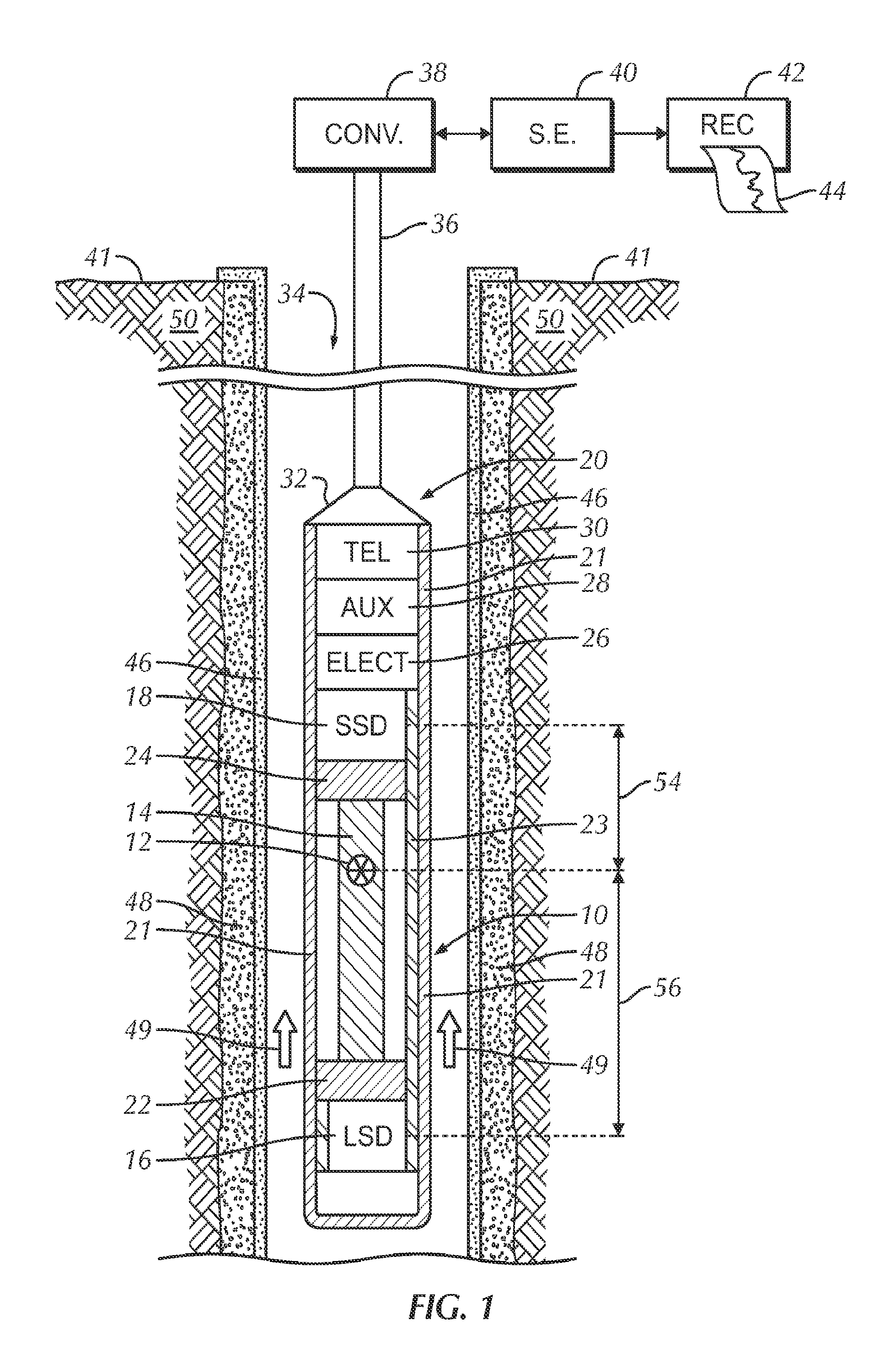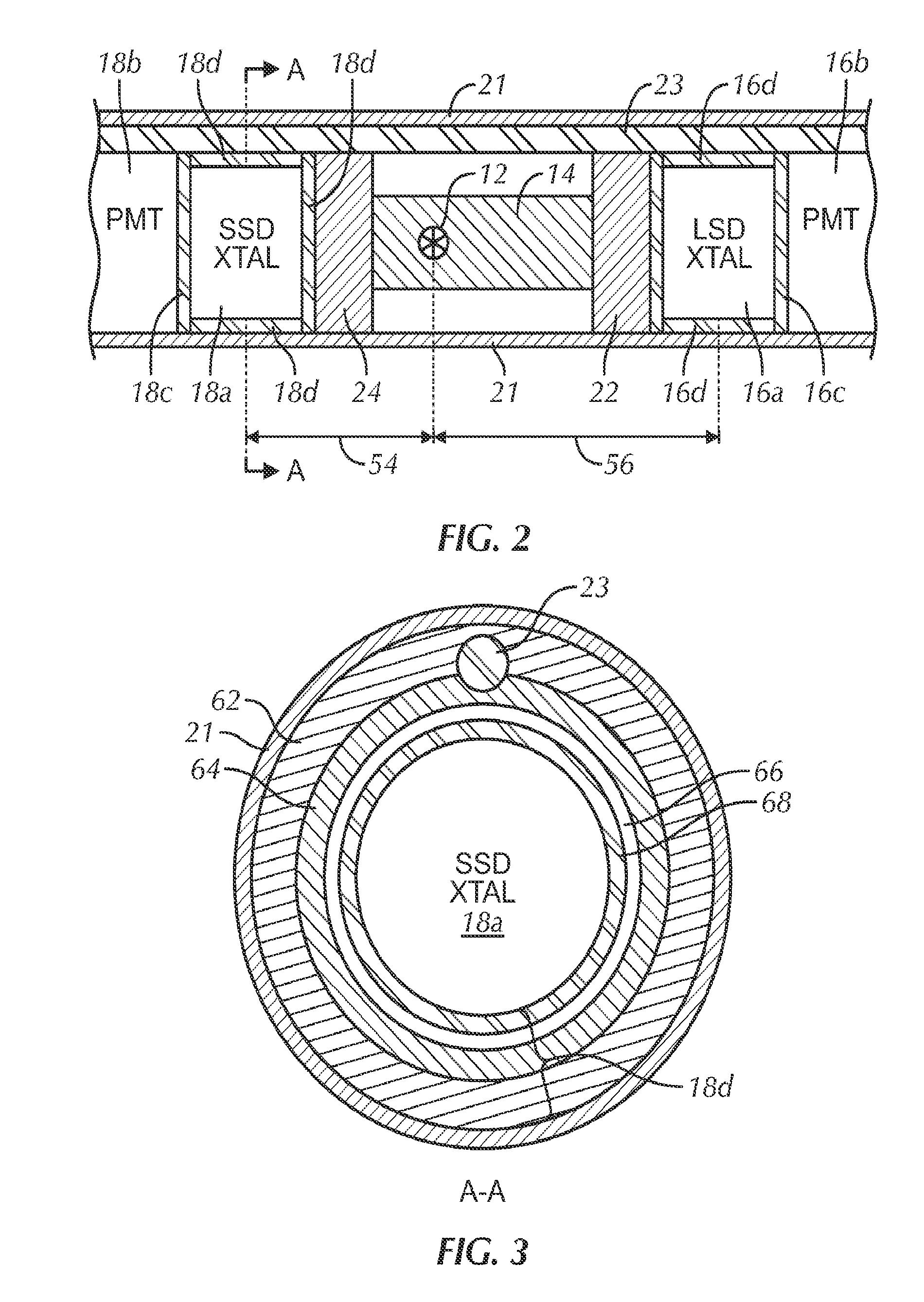Well-logging tool for determining properties in a flowstream
a flowstream and well-logging technology, applied in the field of well-logging tools for determining properties in flowstreams, can solve the problems of limited success of tools, unable to make measurements responsive to full-scale measurement, and hampered the production of logging tools based on electrical resistivity
- Summary
- Abstract
- Description
- Claims
- Application Information
AI Technical Summary
Benefits of technology
Problems solved by technology
Method used
Image
Examples
Embodiment Construction
[0021]The detailed description of the SGHT will be described in detail in the following section. The system hardware is first presented. Basic tool response will next be disclosed. Responses were simulated using the Monte Carlo MCNP-X code. Finally, data processing methodology will be presented using specific production logging examples.
[0022]The SGHT is disclosed as a wireline logging system. The system can also be used as a tubing conveyed logging tool or a pump-down tool with spectral data being recorded in the tool for subsequent analysis at the surface of the earth. The tool can also be embodied conceptually as a logging-while-drilling (LWD) or measurement-while-drilling (MWD) providing that low Z material inserts can be disposed in the region of the source and gamma ray detectors. In this embodiment, measurements would typically be made when “tripping” the drill string rather than when advancing the borehole.
[0023]System Hardware
[0024]FIG. 1 illustrates the major elements of t...
PUM
 Login to View More
Login to View More Abstract
Description
Claims
Application Information
 Login to View More
Login to View More - R&D
- Intellectual Property
- Life Sciences
- Materials
- Tech Scout
- Unparalleled Data Quality
- Higher Quality Content
- 60% Fewer Hallucinations
Browse by: Latest US Patents, China's latest patents, Technical Efficacy Thesaurus, Application Domain, Technology Topic, Popular Technical Reports.
© 2025 PatSnap. All rights reserved.Legal|Privacy policy|Modern Slavery Act Transparency Statement|Sitemap|About US| Contact US: help@patsnap.com



